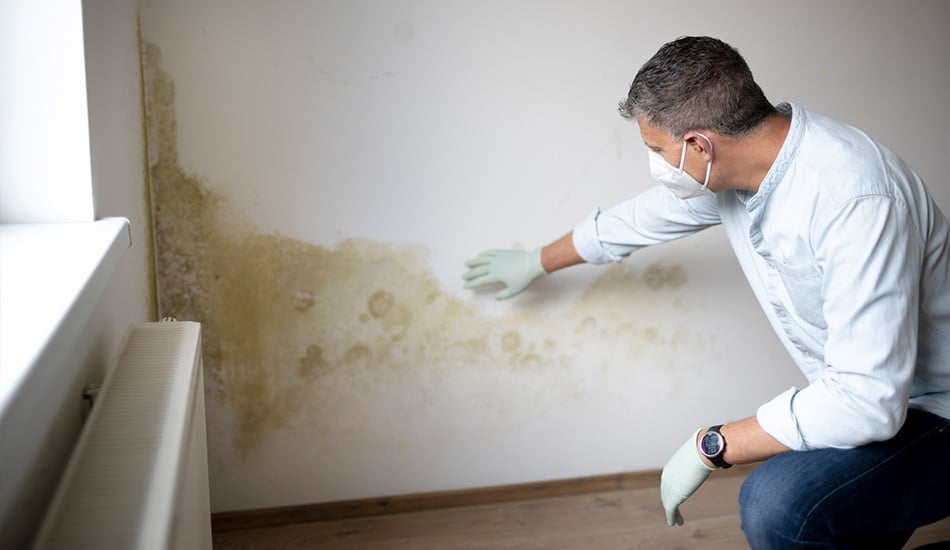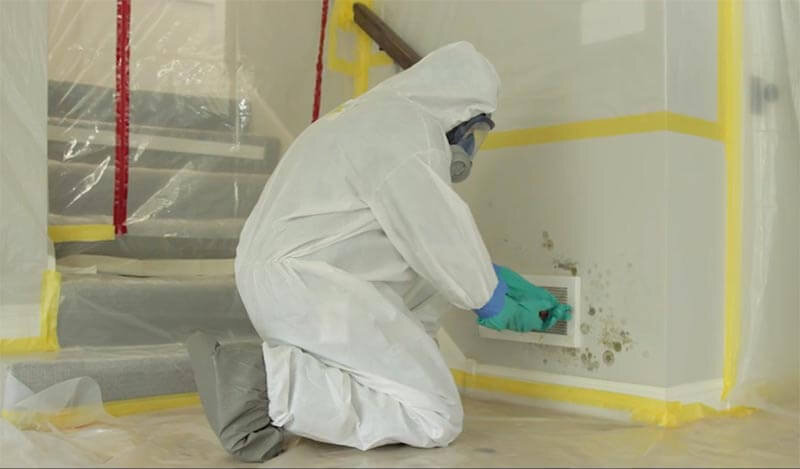After Mold Remediation Strategies for Clean Areas
After Mold Remediation Strategies for Clean Areas
Blog Article
Effective Blog Post Mold And Mildew Remediation Solutions for Your Home
Mold growth in homes can be a relentless issue, frequently needing an organized approach for effective post-remediation options. From understanding the elements that contribute to mold and mildew development to applying appropriate cleaning methods and wetness control actions, the process can be detailed yet crucial for preserving a healthy and balanced living atmosphere. Post remediation mold testing near me.
Recognizing Mold And Mildew Development Factors
The key variable adding to mold growth is wetness. Mold spores require moisture to grow and germinate, making moist or damp environments extremely at risk to mold invasions.

Furthermore, air flow and light exposure can impact mold and mildew development. Areas that lack appropriate air flow and all-natural light are more susceptible to mold growth. By addressing these aspects adequately, individuals can properly mitigate mold and mildew growth and guard their living environments.
Proper Mold And Mildew Cleaning Methods
Utilizing reliable cleansing techniques is crucial in dealing with and avoiding the reappearance of mold contamination in interior settings. The very first action in correct mold and mildew cleansing is to include the damaged area to avoid the spread of spores to uncontaminated locations.

Carrying Out Moisture Control Actions
To efficiently stop mold growth and contamination in interior settings, carrying out dampness control steps is critical. Wetness is the primary element that gas mold development, making it critical to manage humidity levels within the home. One effective measure is to utilize dehumidifiers to keep interior humidity levels listed below 60%. Furthermore, guaranteeing proper air flow in areas vulnerable to moisture accumulation, such as bathrooms and kitchen areas, can help in reducing the danger of mold growth. Regularly checking and fixing any type of leakages in pipes, roofs, or home windows is also important in preventing excess dampness accumulation. Using exhaust followers while food preparation or showering, and permitting air circulation by keeping furniture a little far from walls can help in dampness control. In addition, making use of moisture-resistant products in high-humidity areas, such as mold-resistant drywall and paints, can be beneficial. By vigilantly carrying out these dampness control procedures, home owners can efficiently decrease the probability of mold remove mold release from tires recontamination and preserve a healthy interior environment.
Utilizing All-natural Removal Solutions
After successfully executing wetness control actions to prevent mold development in indoor settings, property owners can currently explore the efficiency of natural remediation solutions in preserving a healthy and balanced living area. Natural remediation services make use of environmentally friendly methods to fight mold and mildew and mildew, making them a prominent option for those looking for safe options. By incorporating these natural removal services into their cleansing routines, house owners can efficiently fight mold and mildew growth while advertising a healthier interior atmosphere for themselves and their households.

Keeping a Mold-Free Setting
In order to stop mold and mildew recurrence and make certain a consistently mold-free setting, it is vital for home owners to apply aggressive upkeep practices. Regularly evaluating areas vulnerable to mold development, such as washrooms, attic rooms, kitchens, and cellars, is critical. Resolving any leaks, water damages, or excess wetness immediately can considerably minimize the risk of mold development. Post Remediation verification. Correct air flow in areas with high humidity degrees is also crucial to stopping mold development. Using dehumidifiers or exhaust followers can help preserve optimum wetness levels and dissuade mold and mildew spores from thriving.
In addition, keeping tidiness in the home is important for mold prevention. Frequently cleaning and dusting surfaces, carpetings, and upholstery can assist remove mold spores prior to they have an opportunity to resolve and multiply. Using mold-resistant products for construction products and furnishings can better assist in developing a mold-free atmosphere. Keeping interior plants in check and guaranteeing appropriate drain in outdoor landscaping can lessen dampness accumulation, reducing the possibility of mold and mildew problems. By following these proactive maintenance methods, home owners can successfully promote a mold-free space.
Final Thought
In conclusion, it mold removal how to is crucial to attend to mold development factors, utilize proper cleansing strategies, execute dampness control steps, make use of natural removal solutions, and preserve a mold-free setting in order to efficiently manage message mold and mildew remediation in your home - Post Mold Remediation. By complying with these approaches, you can avoid mold from reoccuring and ensure a healthy living atmosphere for you and your family members
The key element contributing to mold and mildew development is dampness. Mold spores require wetness to thrive and germinate, making moist or wet website here settings highly susceptible to mold invasions.To successfully protect against mold and mildew development and contamination in interior environments, implementing moisture control steps is critical. Furthermore, making sure correct air flow in locations susceptible to moisture build-up, such as cooking areas and washrooms, can help reduce the risk of mold and mildew development.After efficiently applying dampness control actions to stop mold and mildew growth in indoor environments, homeowners can currently discover the performance of all-natural remediation solutions in keeping a healthy and balanced living area.
Report this page